Home » Hunting Dogs » Bracco Italiano Dog Breed Information, History, Function, and More
Bracco Italiano Dog Breed Information, History, Function, and More
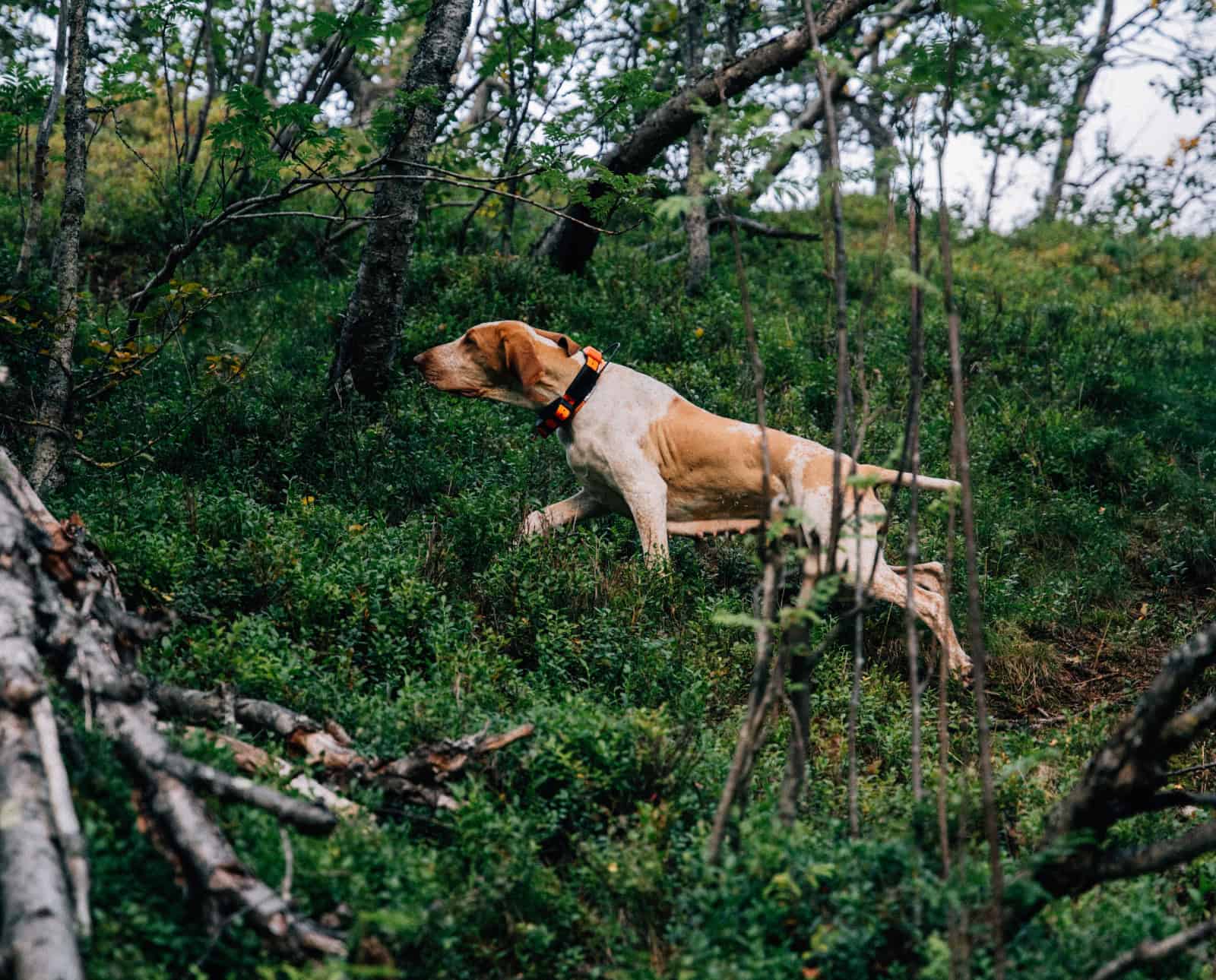
From their home base in Winnipeg, Craig Koshyk and Lisa…
The Bracco Italiano is a large pointing breed with a hound-like appearance known for its unique gait, affectionate, but at times, stubborn personalities.
On a sunny day on the fall of 1990, I was aboard a train traveling through the beautiful countryside of northern Italy. As I watched the rich, green valley of the Po River pass by my window, I was reminded of an area where I hunt ruffed grouse near my home in Manitoba. I couldn’t help wondering what kind of game could be hiding in the root crops and corn.
Listen to more articles on Apple | Google | Spotify | Audible
During one of the many unscheduled train stops in the middle of nowhere, for unknown reasons, I noticed a man walking in the field about 200 meters from the track. He was carrying what I assumed to be a shotgun and appeared to be following a hedgerow that angled toward us. Un cacciatore, I thought, a hunter!? As I pressed my nose against the window to get a better look, I could see that the hunter was not alone; he had a dog. It was fairly large, had an orange and white coat, and was about 50 meters to the hunter’s left, trotting along the other side of the hedgerow.
Typically, an unscheduled stop of an Italian train is a brief inconvenience lasting a minute or two. But on this occasion I found myself hoping that the train had come off the rails. I was absolutely fascinated by the scene outside my window. I had never seen a dog like that before. From its look and range I surmised it was a pointing dog. The way it held its head, obviously air-scenting, told me it was probably hunting feather, not fur. Fortunately, the train remained stationary for about a quarter of an hour, giving me a fantastic opportunity to watch the hunter and his dog work the field.
The first thing that struck me was the pace and stride of the large but very agile dog. It was actually covering a lot of ground at a very smooth, quick trot. Its movements were graceful, fluid. It reminded me of the pace of a Tennessee Fox Trotter.
After reaching the end of the hedgerow, the hunter turned back as the dog worked toward a short line of bushes further out in the field. Half way there, the dog slowed to a tense creep, then froze. The hunter made his way toward the dog, stepped up beside it, and hunter and dog together advanced cautiously toward the cover. They had taken only a few steps when a small covey of what looked like partridges flushed about ten meters in front of them. Just then, I felt a jerk as the train came back to life; we were on our way again. I’d seen the hunter raise his gun, I even heard the distant gunshots, but I couldn’t see if any birds fell. And I didn’t get the chance to see if the dog was sent for a retrieve. The hunter and his dog had disappeared from my view, but not from my memory.
Five years later as I thumbed through a book of dog breeds in my local library, I came across a photograph of the kind of dog I saw that day. It was a Bracco Italiano.
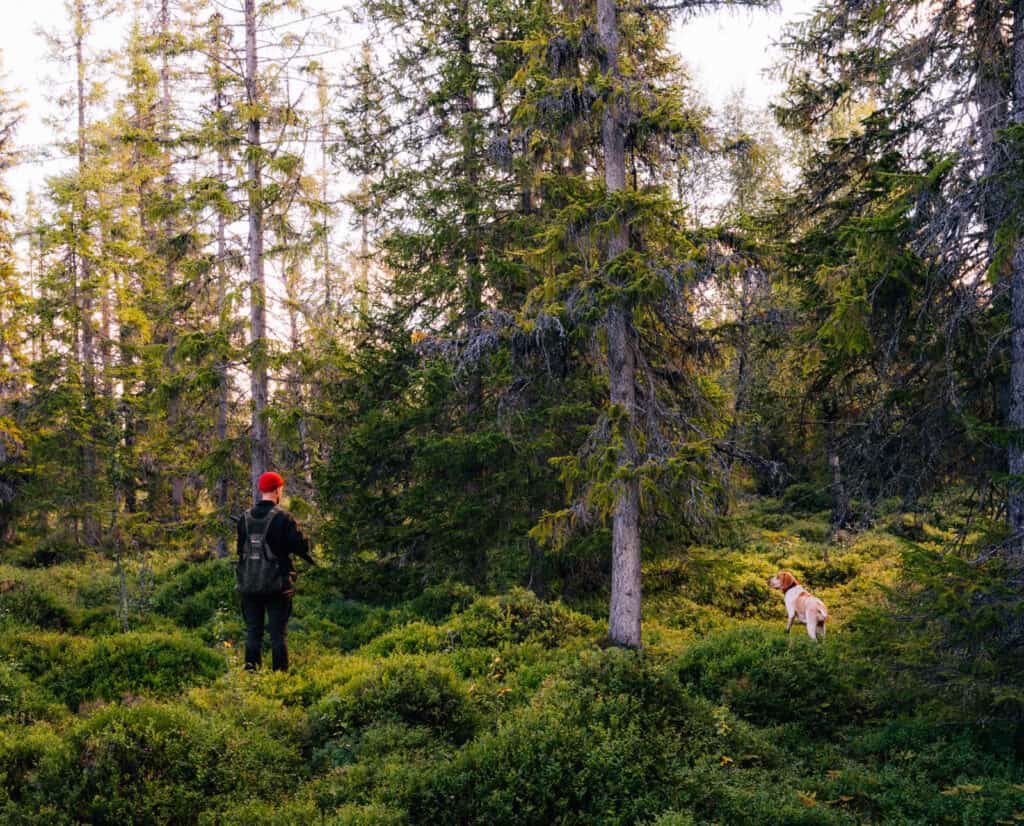
Bracco Italiano Form
The Bracco Italiano has perhaps the most hound-like appearance of all the gundog breeds. The large head, droopy jowls and long, low-set ears give them a look of a tall, athletic Bloodhound.
Size of the Bracco Italiano
Males: 22-27 inches (55-67 cm) and 55-88 pounds
Females: 22-25 inches (55-62 cm) and 53-86 pounds
The wide range of size in the standard is due to the fact that two slightly different types were bred in different regions of Italy. Today most breeders select for dogs in the middle of the standard, but dogs from field lines tend to be smaller than dogs from show lines.
Coat of the Bracco Italiano
The coat is short and dense. It has glossy appearance and is very smooth to the touch. Acceptable colors are: all white, with white orange or dark amber markings, white with chestnut markings, white with pale orange ticking, and white mottled with chestnut ticking (roan-chestnut) eyes and ears.
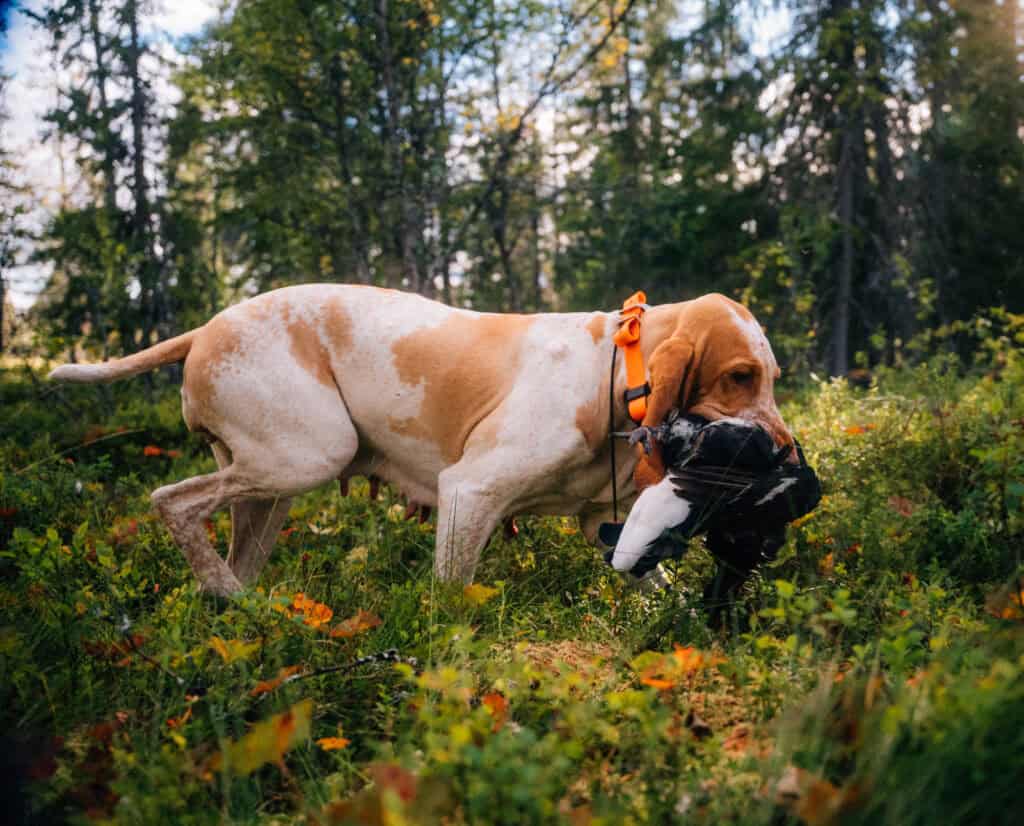
Character of the Bracco Italiano
Among the most common terms owners of the Bracchi use to describe their dogs is “affectionate”. But many will also tell you that, at times, their dogs can be stubborn.
Training the Bracco Italiano
The breed is known to be slow to mature and quite soft. Harsh discipline and forceful training methods are to be avoided. According to American Bracco breeder Chris Goodman:
“Bracchi have a houndy appearance, but there is nothing hound-like in their personality. They are soft and affectionate animals that do not take well to heavy-handed training. Lean on them to hard and they will sulk. Positive reinforcement techniques work best with them.”
Bracco Italiano and Protection
The Imposing size and deep voice of a Bracco Italiano would seem to make them a good candidate for a guard dog. And while I am sure they can, I’ve never actually heard one bark, let alone growl.
“They might make a good doorbell but that’s about it. They are just too friendly to be considered a guard dog.” (Chris Goodman)
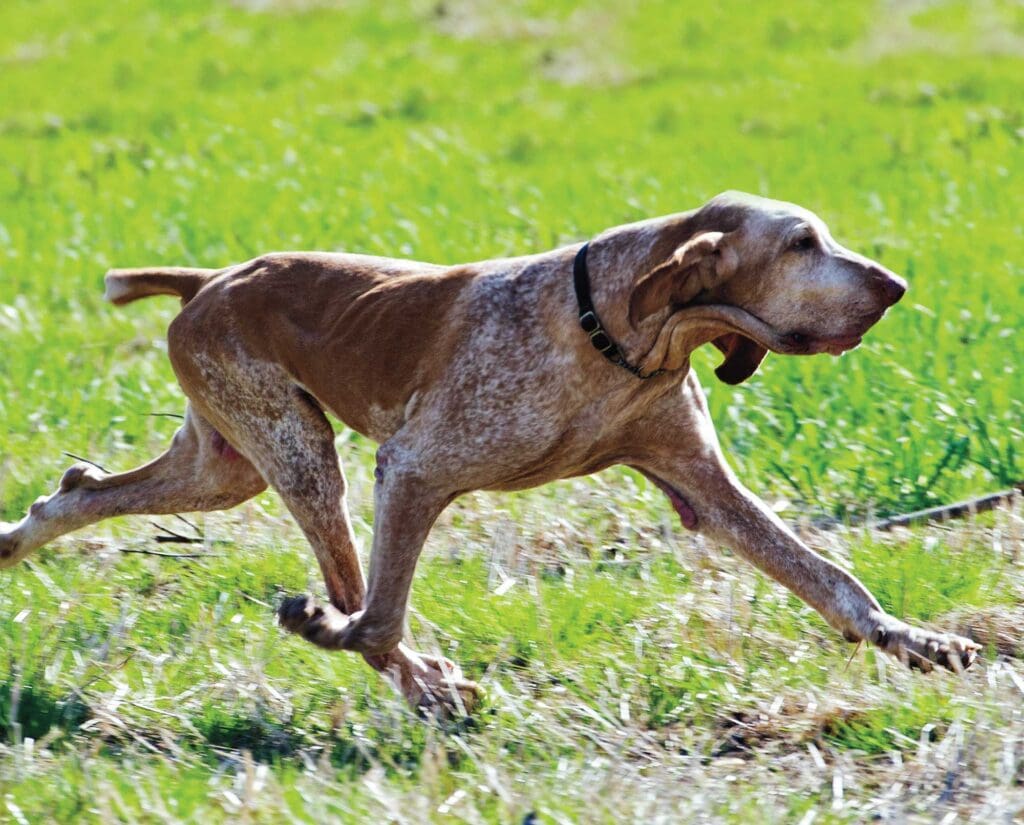
Bracco Italiano Health Issues
Incidences of hip dysplasia and other common canine health issues are not unknown in the breed, but are not particularly common. As can be expected in a breed with somewhat loose skin on and around the head, ectropion can occur. There have also been known cases of gastric torsion.
Bracco Italiano Clubs
The official club for the Bracco Italiano in Italy is the SABI (Società Amatori Bracco Italiano). Formed in 1949, it organizes field trials and conformation shows throughout Italy. In the United States it is the Bracco Italiano Club Of America (BICA). There are also clubs in Holland, Belgium, and the UK.
Bracco Italiano Populations
Today in Italy, there is a healthy and stable population of Bracchi Italiani. Approximately 600 to 700 pups are whelped there each year. The breed enjoys a good reputation among Italian hunters as a reliable gundog with outstanding natural abilities and an excellent nose. There is even a fairly active field trial scene for Bracchi in Italy with a number of professional handlers and trainers specializing in the breed.
Worldwide populations are estimated to be around 3500 to 4000. NAVHDA (North American Versatile Hunting Dog Association) had 102 registered in 2022. Over a 450% growth in the last decade. Outside of Italy, the breed is slowly gaining ground, particularly in Holland and the UK. In North America, however, it lags far behind its cousin, the Spinone.
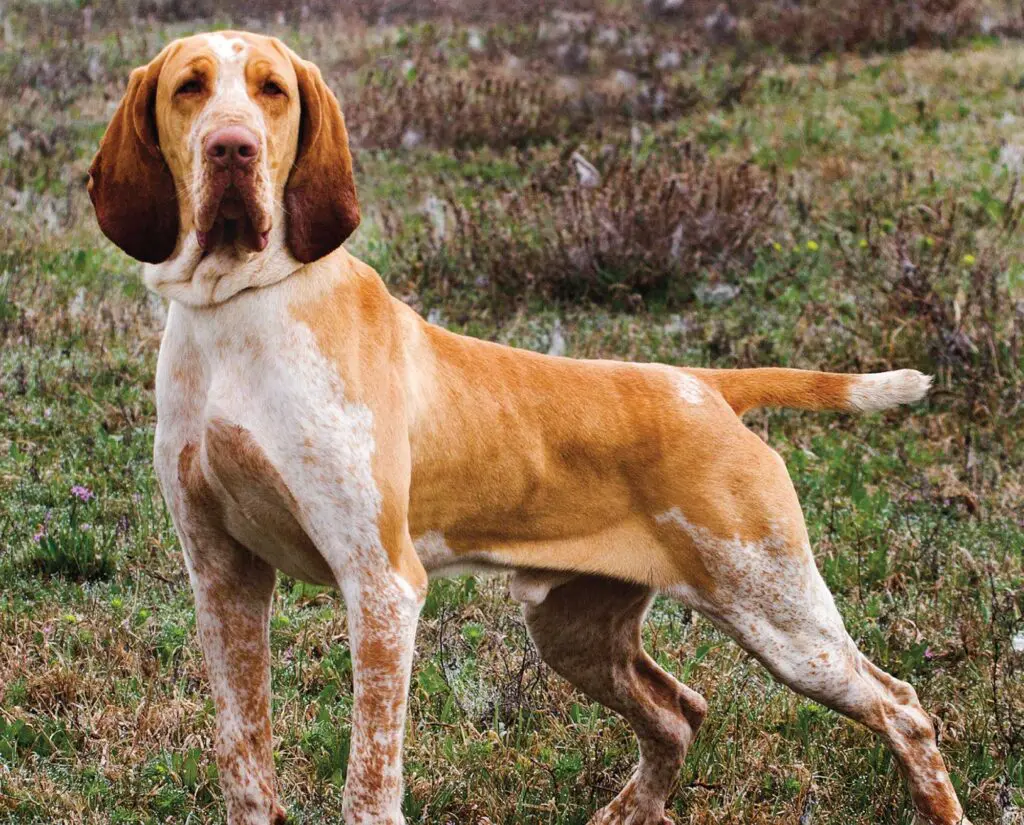
A Detailed History of the Bracco Italiano
Dogs fitting the description of the Bracco Italiano have existed for centuries, mainly in the northern half of the Italian peninsula. Written references to their general type can be found as far back as the 13th century. Some authorities argue that they are the ancestors of all pointing dogs including the Old Spanish Pointer which, they claim, made its way to Spain from Italy. Others disagree. We will never know exactly where pointing dogs were first developed, but it is clear that the Italians were among the first to systematically breed them.
But it was not until the 17th century as hunting methods changed from netting to the use of firearms that the Bracco Italianos began to take on a form and function that we would recognize today. Former club president Cesare Bonasegale wrote about the period in an online article:
“…at the beginning of the 1600s, with the evolution of the matchlock and wheel-lock arquebuse… guns became more manageable and could be used to shoot flying game, something which must have brought about a remarkable turning point in the use of pointing dogs. Dogs would have had to point more solidly, something not required when hunting with a hawk. But above all it became important to develop dogs with the scenting ability to locate game from a greater distance than what was required to hunt with a net. Nevertheless, it would take a hundred more years before the advent of guns of a modern design that enabled the dissemination of the new type of hunting, resulting in the golden age of the Bracco Italiano, beginning in about 1700.“
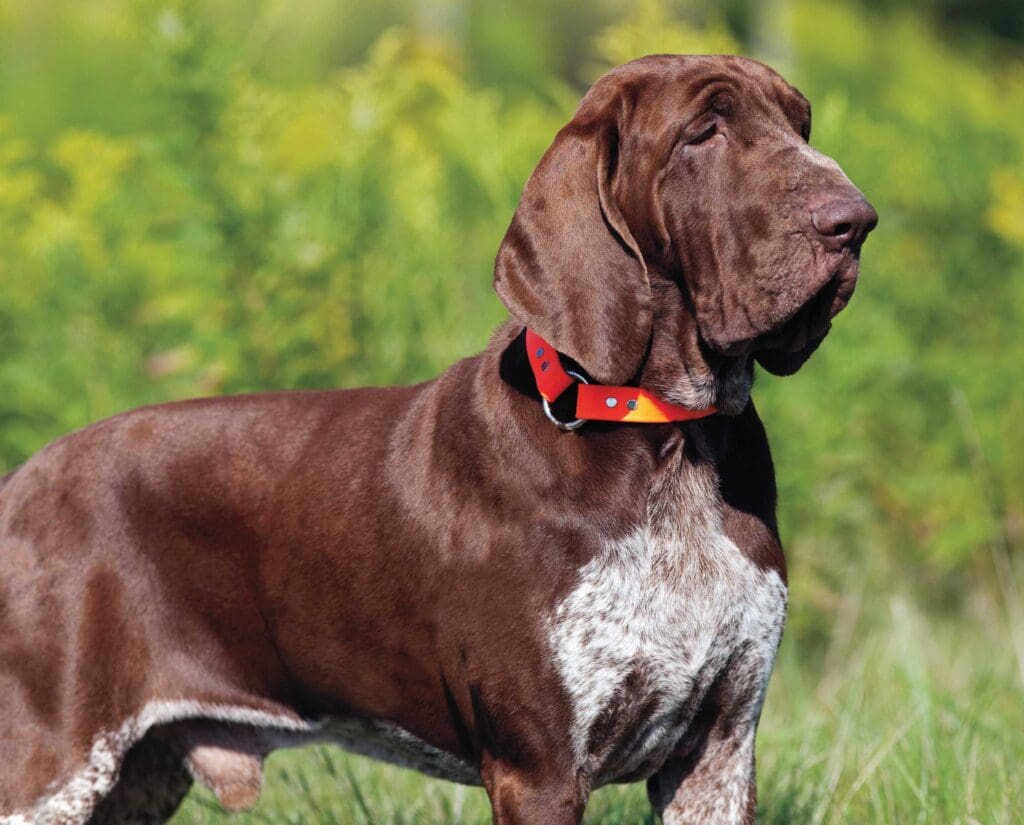
During this transformative era, the breed’s popularity rose and it became the favorite hunting companion of the Italian nobility. The famous and influential Gonzaga and the Medici families bred some of the finest Bracchi of the time. Eventually, dogs from these lines made their way to royal kennels elsewhere in Europe, including the court of France’s King Louis XIV in the 17th century.
As the breed increased in popularity and population, it became clear that two general types of Bracchi were being bred: one, a smaller, lighter, orange and white version; and the other, a somewhat larger dog with a brown and white coat. Various authorities conclude that the two types developed due to different hunting conditions, traditions, and game densities in their native regions. It is speculated that on the plains of Lombardy the local cover was sparser and the game more wary. A more cautious, methodical dog was therefore required to hunt them effectively. In the Piedmont region, the dogs were said to be faster and wider ranging.
In the decades just prior to the establishment of official kennel clubs and breed registries, there is said to have been other versions of the Bracco Italiano. The most well known was the Bracco Ranza from the area around the city of Piacenza. Apparently, this breed’s origins can be traced to 1820 when the Duke of Piacenza presented the Marquis Gaetano Scotti of Vigoleno with two dogs he had brought back from Spain. The female of the pair got lost during a particular hunt. Eventually, a farmer named Ranza found the bitch and was allowed to keep her. He then bred her to a white and brown Bracco Italiano. Pups from that litter were used to establish the Bracco Ranza. The breed managed to survive until at least 1909, when a standard was published. By 1930, however, it had died out.
As with most of the other Continental breeds, war and revolution have endangered the survival of the Bracco Italiano several times. And like other breeds on the continent, the Bracco was almost completely overtaken by the massive importation of Pointers and Setters from England in the 1800s. In fact, by the turn of the last century, the breed had been more or less abandoned by nobility and common hunter, alike. With game populations in decline, the close-working, methodical Bracco simply could not compete with the faster, wider-ranging British breeds.
Perhaps the lowest point came just after the Second World War. Many kennels did not survive the war and of the few that did, some went under during the extremely difficult post-war years. Fortunately a small but loyal group of enthusiasts managed to hang on. In 1949 they formed a club for the preservation and promotion of the Bracco Italiano.
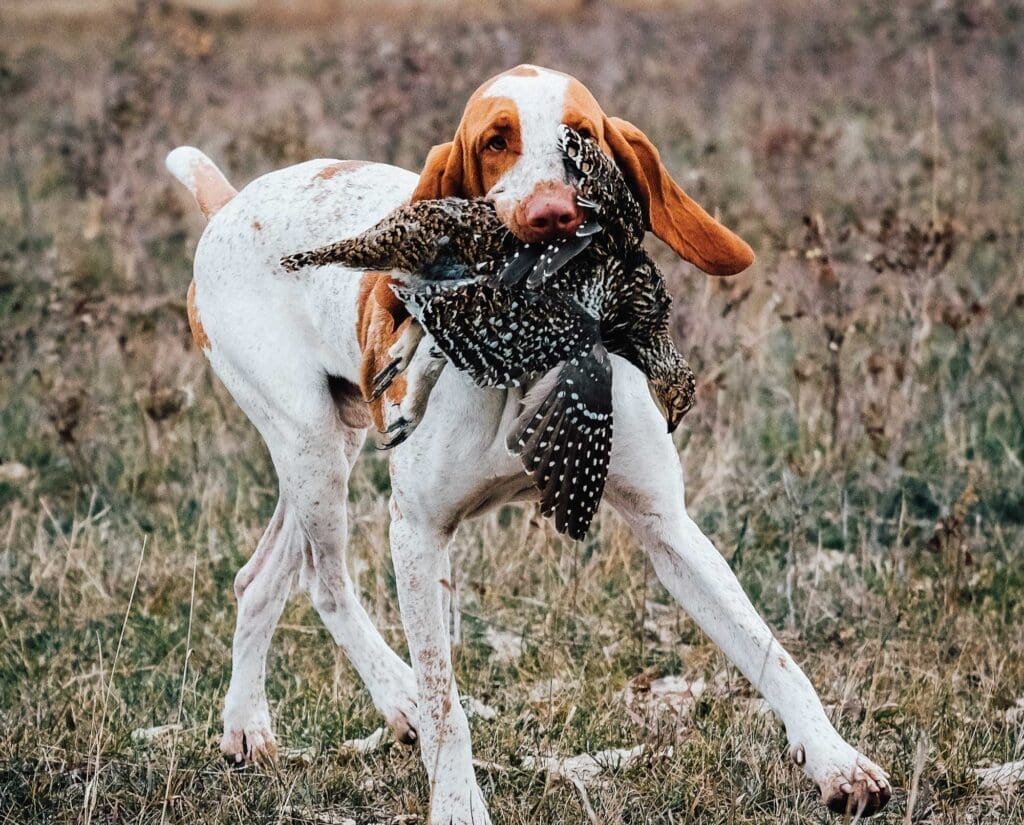
The Bracco Italiano Today
Throughout the history of the Bracco Italiano, breeders have modified their dogs to suit local conditions. At the turn of the last century in particular there was a great deal of “creative” breeding done in reaction to the massive importation of other breeds.
Writing in the late 1950s about the experimental period in the Bracco’s development, French author Jean Castaing declared that:
“The Italians tried to transform their dog for the sake of the fashions of the time. They must have used the same processes as breeders in our country, for there were no other ways: crosses to Pointers, reduction in the size and weight by artificial means, and selection of dogs less Continental in type… For the last 20 years, breeders have denounced this destruction of their Bracco and these half-breeds have almost disappeared.”
In his more recent article, Cesare Bonasegale comments about this period as well:
“The penultimate episode, which took place between the two wars, was one of evil bastardization with the Pointer; a shortcut to make the Bracco more dynamic since at that time it was too slow, lethargic and too close-working for the lower densities of game. These crosses were excellent dogs responding to the needs of our hunters… But they were not Bracchi Italiani in their movement, behavior or psychology. There are ways to create a new breed, as the Germans did so well–and people did in fact call them “Bracco Pointers” and considered them to be a new breed. But the characteristics of these crossbred dogs were too variable, and the crosses produced dogs that were unable to trot properly.”
By the 1960s, breeders had managed to weed out the overly “Pointerized” dogs and lines. But they continued to select for hard-working, athletic dogs with a more dynamic and wide-ranging search than their ancestors and eventually arrived at the modern Bracco Italiano seen today.
It’s been almost 20 years since that day on the train when I first laid eyes on a Bracco Italiano. Since then, I have had the pleasure of Italy. And what I’ve seen leaves me with no doubt: a well-bred Bracco Italiano can be a excellent gundog.
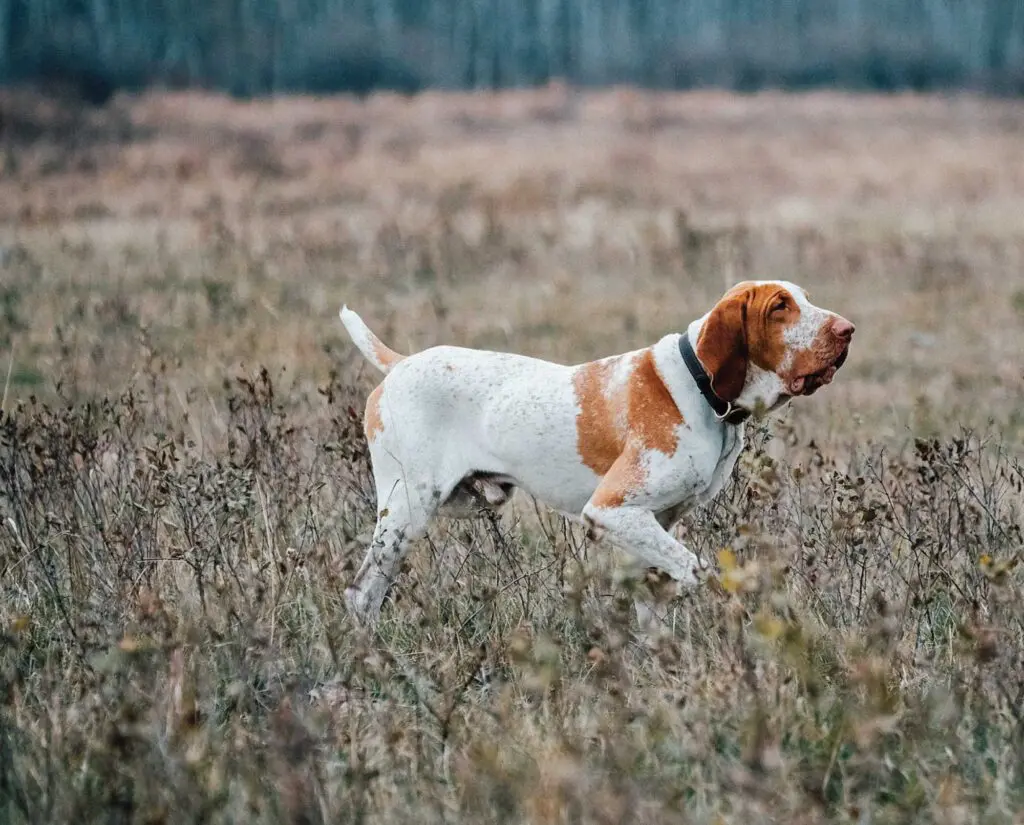
Among the most memorable experiences I’ve had with the breed was at a field trial organized by the SABI, near the Italian city of Piacenza. In attendance were a number of club members and several professional handler/trainers. Some of the dogs presented that day were among the best of the best. All of them ran solo for about half an hour. The terrain was a mix of knee-high grasses and low, thick bushes. The quarry was wild pheasant and partridge.
Following the judges, with cameras in hand, I was absolutely mesmerized by what I saw. There in the distance, barely visible in a morning fog that still lingered over the field, was a Bracco Italiano quartering back and forth at an amazingly fast trot. It was the same trot I had seen from the train window nearly 20 years earlier, but it was astonishingly quick and powerful. It is truly difficult to describe the power, elegance and speed of this kind of trot; it is something you have to see to believe. But there it was, the trotto spinto I had read so much about. It is the unique gait and style of movement that Bracco breeders in Italy strive so hard to preserve in their lines. Later on, I noticed that some of the younger dogs galloped most of the time. Club members explained that it is normal for young dogs to gallop a lot, and that the judges will accept it at that age. As they mature, these same dogs will be expected to trot most of the time.
I also visited with former club president and longtime breeder Cesare Bonasegale, who had graciously agreed to run two of his dogs for me in a forest near his home. Both dogs displayed the absolutely classic Bracco style of trotting. They were very thorough in their search and covered a lot of ground. Their points were solid, almost statuesque.
In Europe, the Bracco Italiano has a good reputation for being a dependable, hard working hunting dog. But it is not even on the radar of the majority of Canadian and American versatile dog enthusiasts. And that is a shame. The breed should be better known over here. I understand that the trotting style or houndy look may not be everyone’s cup of tea, but after having seen Bracchi in Italy, France and Holland, I can confirm that a Bracco Italiano from proven lines can be a fantastic hunting dog.
From their home base in Winnipeg, Craig Koshyk and Lisa Trottier travel all over hunting everything from snipe, woodcock to grouse, geese and pheasants. In the 1990s they began a quest to research, photograph, and hunt over all of the pointing breeds from continental Europe and published Pointing Dogs, Volume One: The Continentals. The follow-up to the first volume, Pointing Dogs, Volume Two, the British and Irish Breeds, is slated for release in 2020.




Watched my one and only episode of Meateaters (or whatever it’s called) and the host was hunting sage grouse with a guy who had those bracco-hounds. Frankly, it was painful to watch and my wife’s house cat would of been a more affective tool to use. Hopefully the dogs I saw on this show were not indicative of the breed as a whole
Indeed those were not a great examples of the potential of the breed as a pointing dog. They are often prejudge by their hound looks, some of them too far from what the breed should actually look. When you get a Bracco Italiano from the right lines and type they can be as fast, functional and intense as any popular continental breed.
Enjoy hunting behind my Bracco, incredible sense of smell, very driven to hunt.